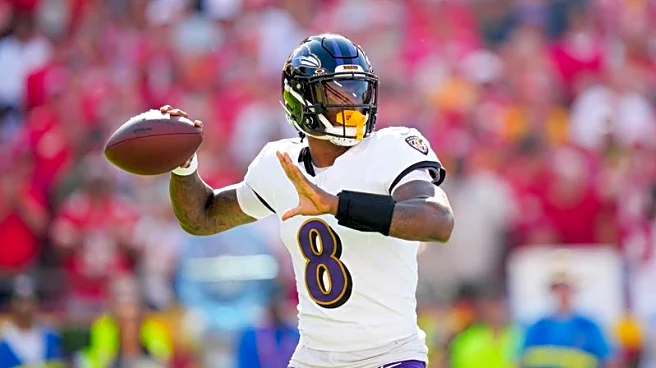What's Happening?
The Baltimore Ravens have made a significant change to the injury status of their star quarterback, Lamar Jackson, ahead of their Week 8 game against the Chicago Bears. Initially listed as a full participant
in practice, Jackson's status was altered to 'limited' and subsequently downgraded to 'out' for the upcoming game. This change has prompted the NFL to announce a further review of the situation. Jackson, who has been dealing with a hamstring injury, participated in Friday's practice with the scout team, but did not take starter reps. The Ravens clarified that the adjustment in Jackson's status was made after consultation with the league office, emphasizing the importance of accurate injury reporting as a cornerstone of public confidence in the NFL.
Why It's Important?
The alteration in Lamar Jackson's injury status is significant for several reasons. Firstly, it impacts the Ravens' performance, as Jackson is a key player whose absence could affect the team's chances against the Bears. Secondly, the situation highlights the importance of transparency and accuracy in injury reporting, which is crucial for maintaining public trust in the NFL. The league's decision to investigate suggests a commitment to uphold these standards. For the Ravens, the change in Jackson's status means relying on backup quarterback Tyler Huntley, which could influence their strategy and performance. The team's current standing at 1-5 in the AFC North adds pressure to manage player health and game outcomes effectively.
What's Next?
As the NFL plans to review the Ravens' handling of Lamar Jackson's injury report, potential outcomes could include clarifications or adjustments to league policies on injury reporting. The Ravens will need to prepare for their game against the Bears without Jackson, relying on Tyler Huntley to lead the offense. The team's performance in this game could have implications for their season trajectory, especially given their current position in the standings. Additionally, the league's investigation may lead to broader discussions on injury reporting practices and their enforcement across teams.














